First published on Wordpress in March 2022.
This blog post is being inserted into the series because it’s relevant, although it’s chronologically in the wrong place. The work it discusses actually took place after the heat pump had been installed, although ideally it should have been undertaken before we started any works. But we had our gas disconnected so that wouldn’t have worked.
This blog post is being inserted into the series because it’s relevant, although it’s chronologically in the wrong place. The work it discusses actually took place after the heat pump had been installed, although ideally it should have been undertaken before we started any works. But we had our gas disconnected so that wouldn’t have worked.
We wanted to understand where our heat was being lost (or as it turns out, where cold air was leaking into the house) and so we contacted CHEESE who came and performed a survey. They have a very specific methodology that requires the home to be heated for a couple of hours before the survey, then a large fan is placed in an external doorway along with an airtight seal.This creates a negative pressure inside the property. The result of this is to suck in cold outside air through any cracks. Unlike external surveys, these can be undertaken at any time of day as long as the temperature differential between the conditioned (heated) air and unconditioned (external) air is great enough (usually days between October – March are sufficient).
The assessor walks around the property with the homeowner and a modified thermal camera and records a series of short ‘movies’ per room and takes still shots of areas of interest. And if like me you are a retrofit nerd you’ll end up having enjoyable conversations about triple glazing efficiencies, home battery storage and the like.
Our property has double glazing from the original build (20 years ago), an attic space where we have doubled the insulation to just over today’s recommended thickness, a fire place that is no longer used and three external doors). I wrote a bit about the draught proofing and insulation work that had been done as part of post #1.
Overall, our house isn’t too bad. Don’t get me wrong there are things that need to be improved and the following images show some of the common issues as well as the worst issue. The image pairs show the thermal image on the right and a normal photo on the left. In the thermal image, cold areas in blue and black and increasingly warmer areas are green, yellow, orange, red and white.
A common issue was the cold air coming in through the double glazing trickle vents. This is to be expected and is a designed feature of these windows. Here you can see the cold air seeping in through the vent.
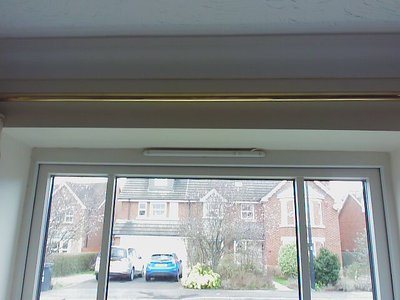

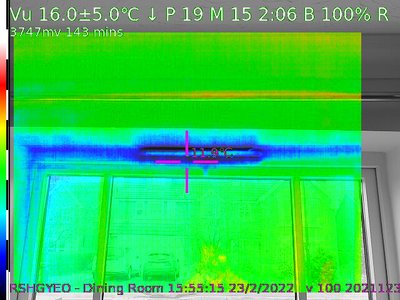
Another common issue was in the corner of windows. These were twofold: first, there could be ingress through the frames themselves where the rubber seals need replacing or second, air could be coming through small cracks that result from either the fitting of the window or years of expansion and contraction of the frame. Both types can be seen in the following image pair. This looks much worse than it is and can be reasonably easily remedied with some window seals or polyfilla.
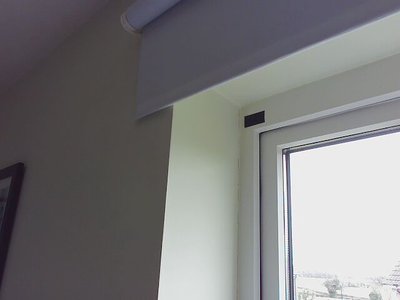

Another common issue is around the loft hatch, and sure enough we had a leaky hatch. This was worse than expected but has already been remedied by creating a fabric skirt that’s been attached to the attic side of the hatch and filled with insulation. We can already feel the difference!
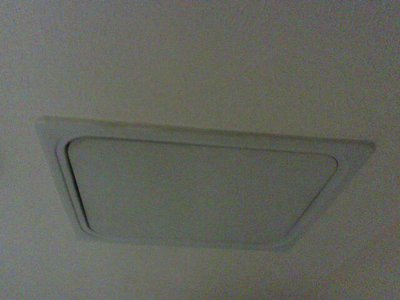
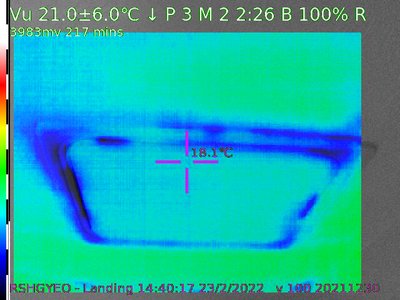
And then we looked at the bathroom door – it was like something out of a horror film! Something very wrong lurked on the other side, but what could it be……
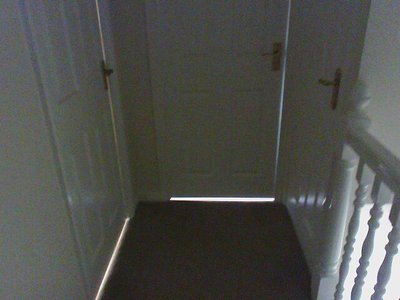
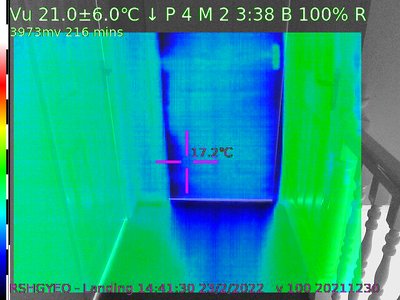
This caught us by surprise. Behind the bath was a huge hole in the plaster-work. Behind the plaster-work was a gap that went up to the loft space. In the attic this gap was uncapped and next to a vent to the outside air. This meant that it acted like an unblocked chimney and cold air was drawn down into the house. Now we knew why the bathroom always felt chilly. Luckily the bathroom will be replaced soon so we will then have the opportunity to do something about sealing the gap. In the meantime my partner has been in the attic and blocked off the top of the fake chimney, and blocked off behind the bath: the bathroom is already warmer.
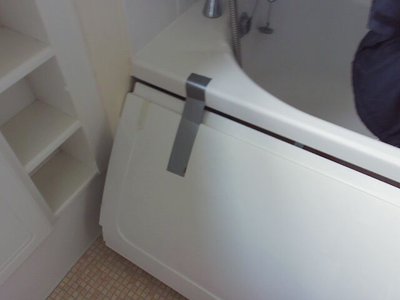
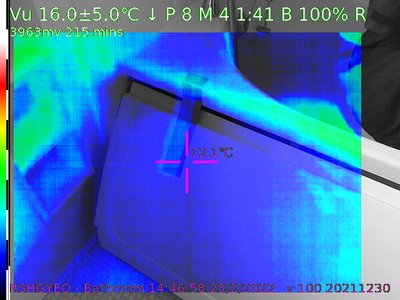
The actual chimney in the lounge wasn’t too leaky due to the Chimney Sheep we put in it, but the front door was still a terrible leaky mess. We’ll need to replace that at some point.
This survey was fascinating and really useful. If you get the opportunity to have something like this done (probably next season now) then do consider it. It helps you define what insulation is needed and where. Most fixes are easy and cheap to implement and could make a big difference to the cosiness of your home, and ultimately your fuel bills.
Thanks CHEESE!